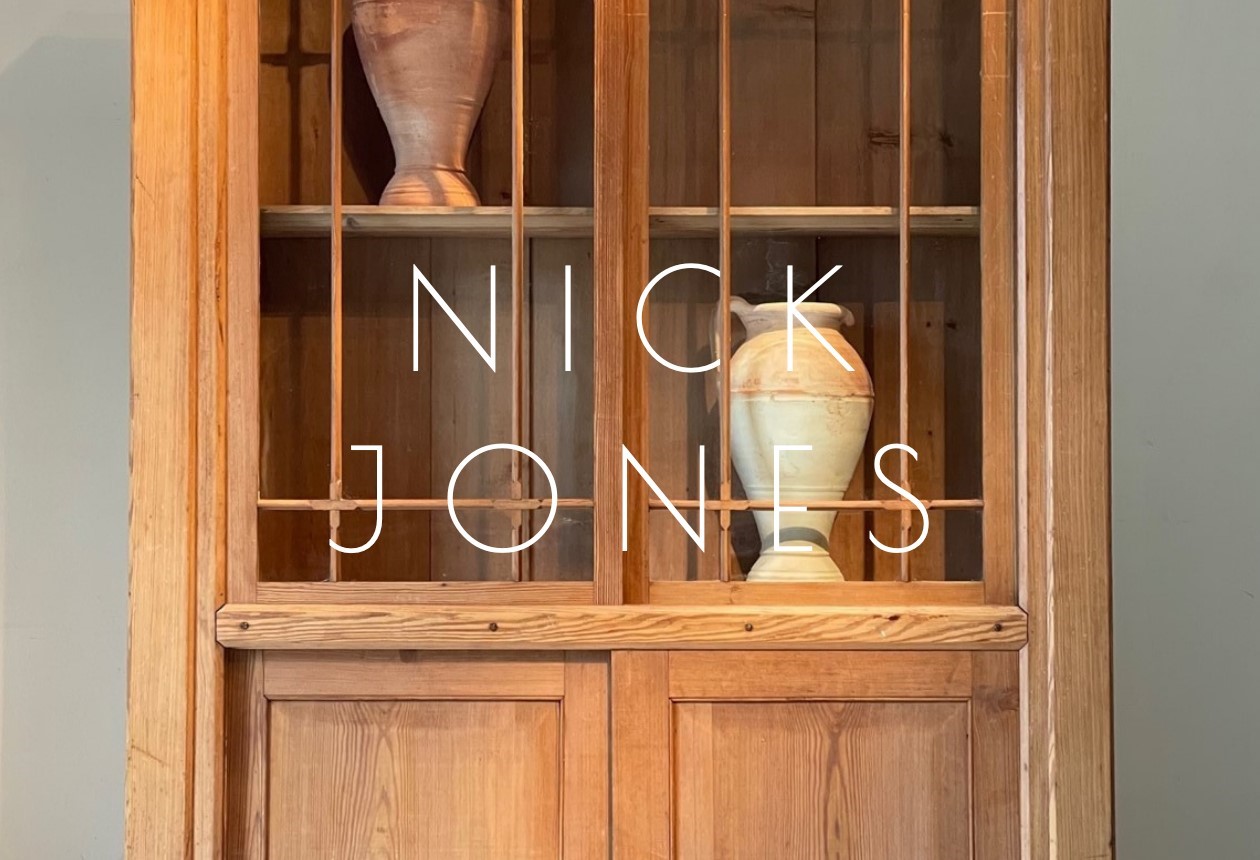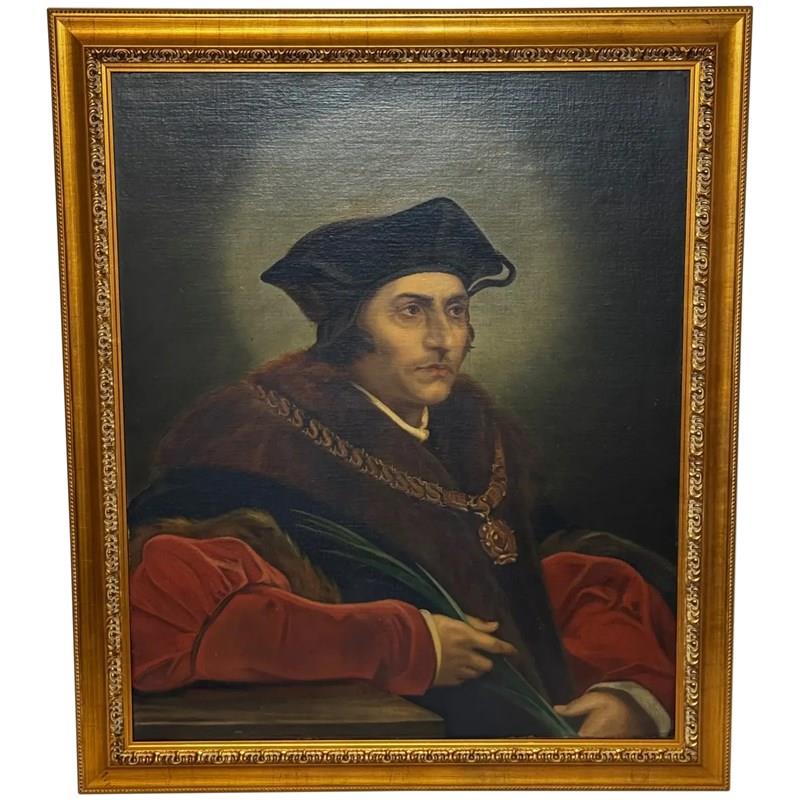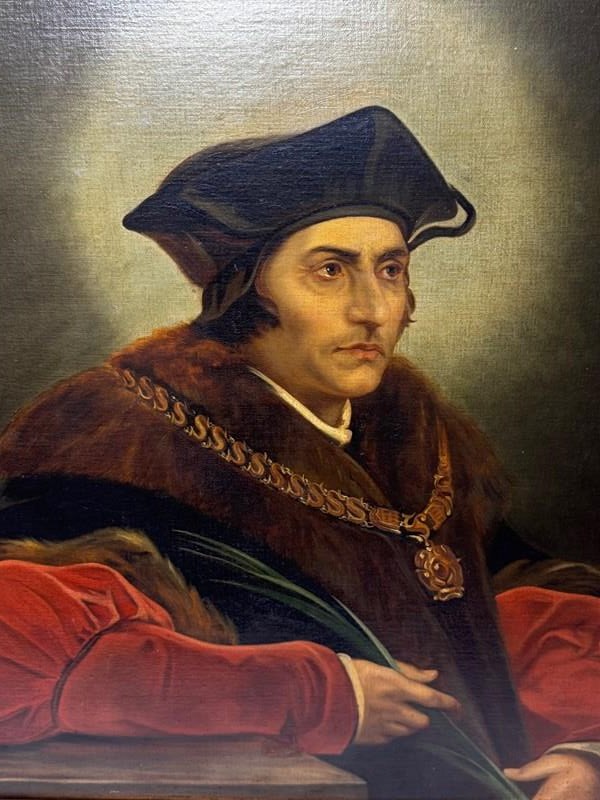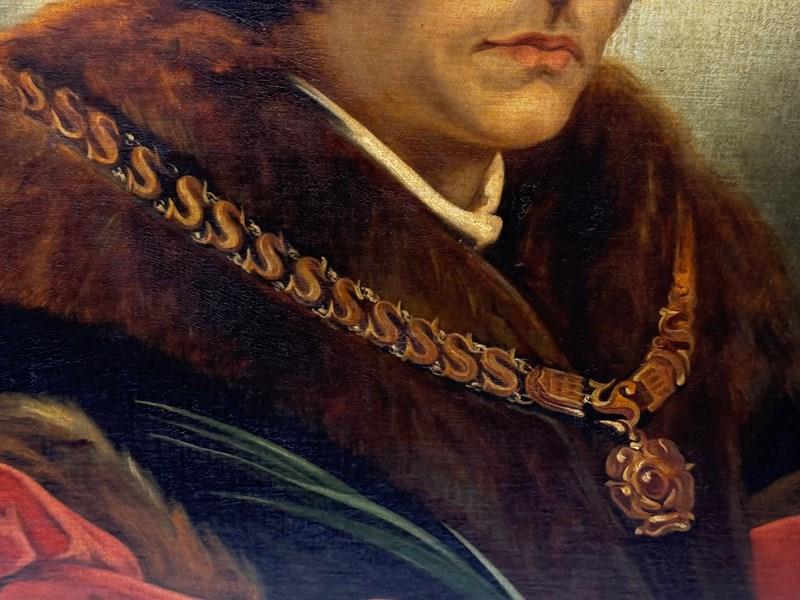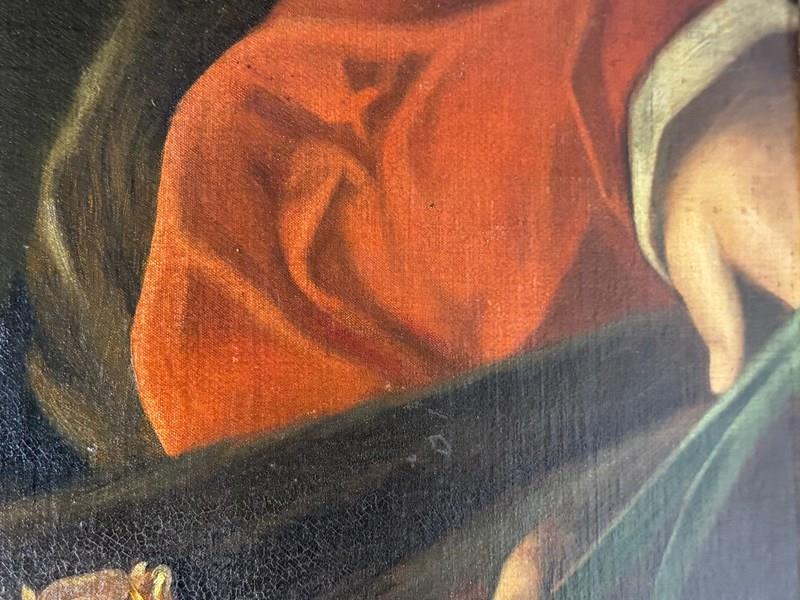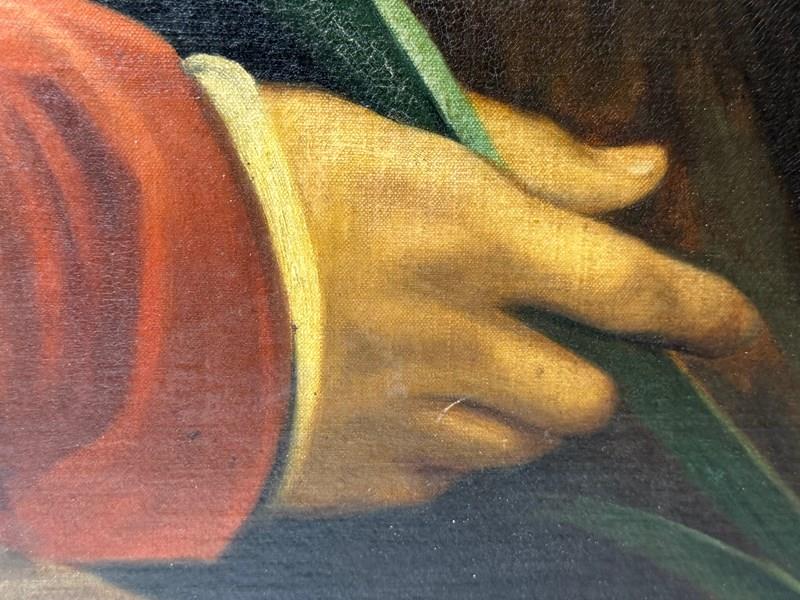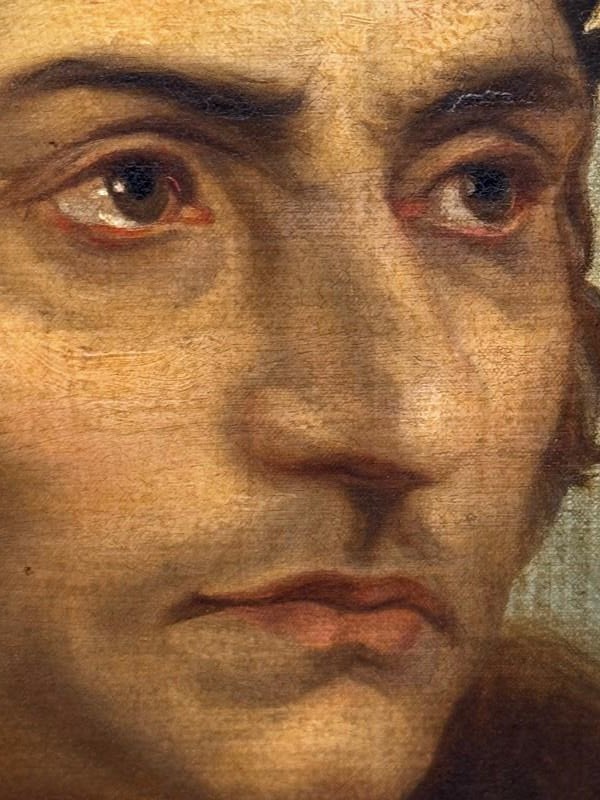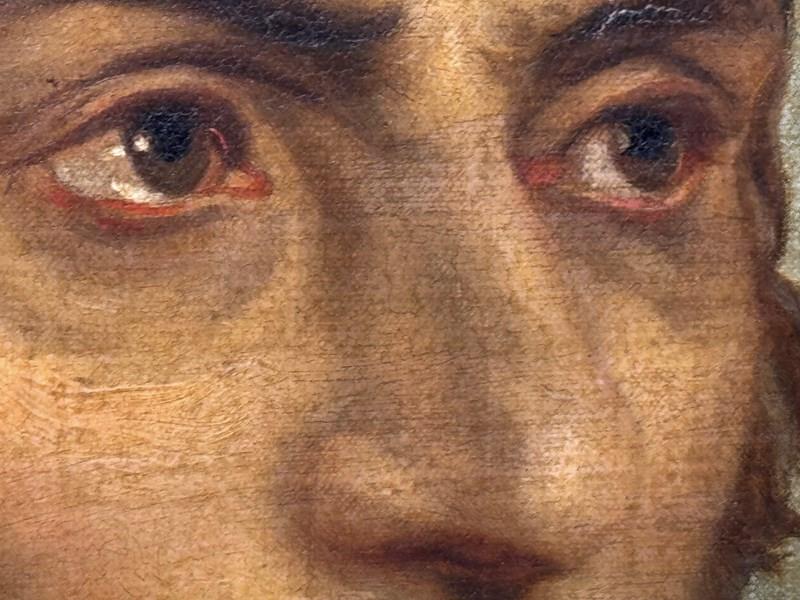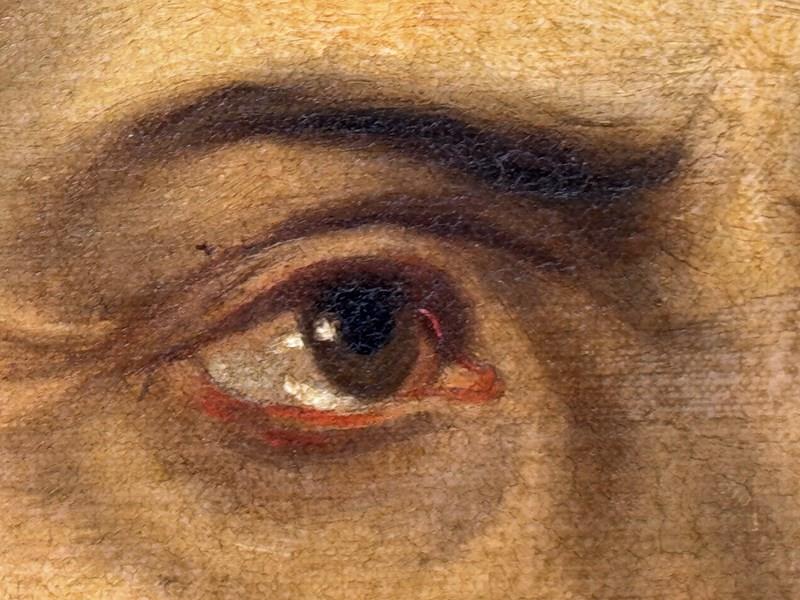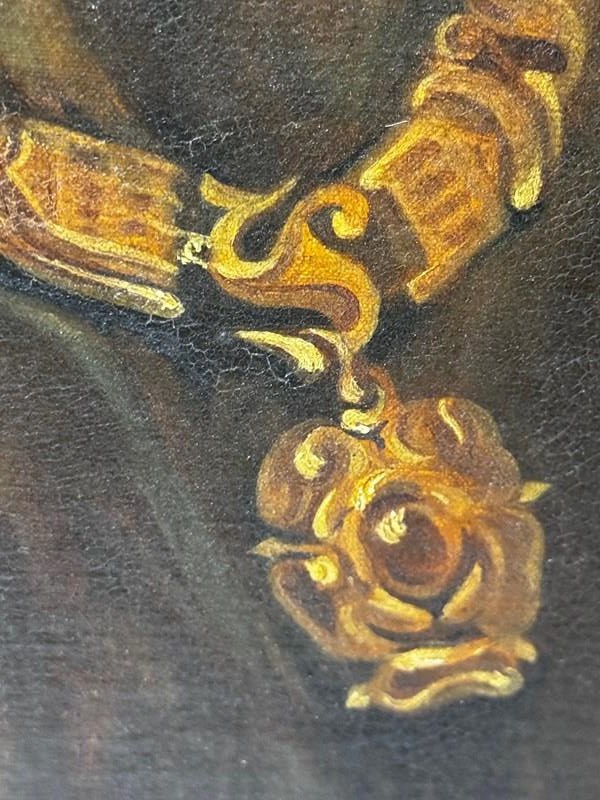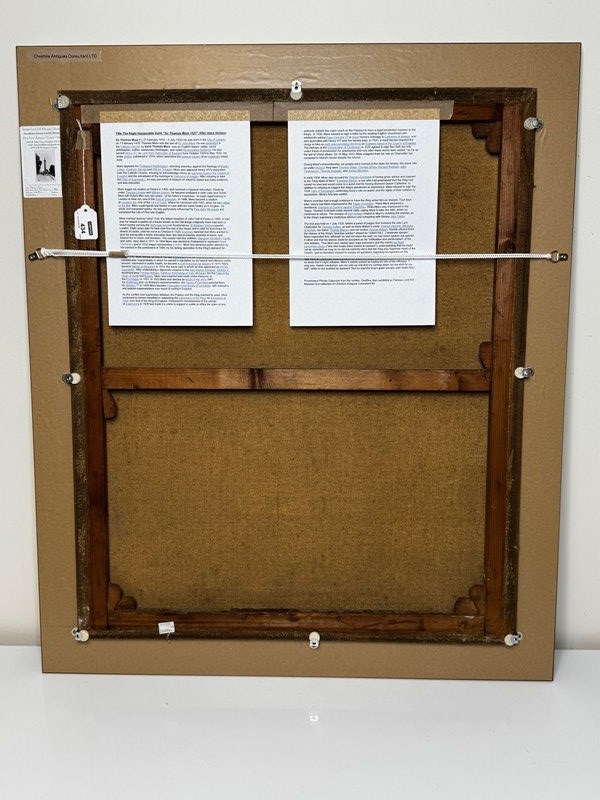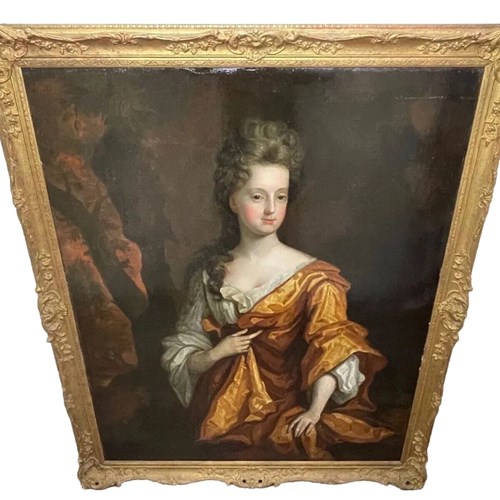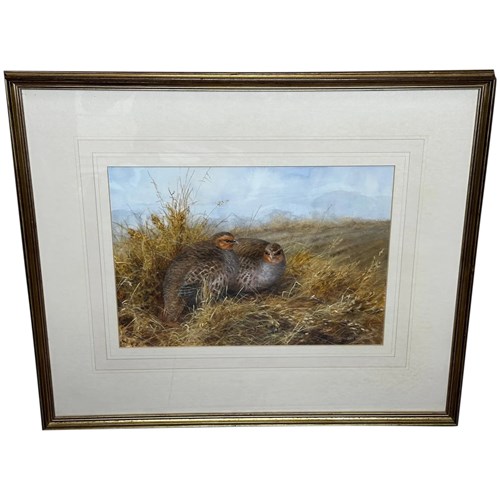Historic English Oil Painting Sir Thomas More After Hans Holbein
Stock No
CACL479
2023
- £5,000.00
- €6,042 Euro
- $6,322 US Dollar
Questions about this item?
Like this item?
Item Description
Historic Large English Oil Painting Portrait Sir Thomas More PC Chancellor of the Duchy of Lancaster 1527 After Hans Holbein.
Impress your clients & guests in your office or home with this notable portrait masterpiece
Painted in the style of after Hans Holbein.
Subject half length portrait of the known historical important Englishman Sir Thomas More Privy Council, who is sitting down, his gaze is focused intently towards the left as shown in 1527 when he was Chancellor of the Duchy of Lancaster. He is in his traditional Elizabethan dress. Wearing his large thick brown fur overcoat gown with gold chain and wearing his Tudor skullcap, with his hands holding onto a feather pen, underneath he wears red velvet top with large ruff collar.
Title The Right Honourable Saint “Sir Thomas More 1527” After Hans Holbein.
Oil on canvas.
Circa 1900 end of Victorian era early 20th century.
Set in a rather decorative recent gilt frame which enhances this work of art even further, the frame size being 92.8 cm high and 79 cm wide.
So collectible and sought after the subject portraiture matter.
Unsigned English school artist.
Sir Thomas More PC (7 February 1478 – 6 July 1535) he was born in the City of London, on 7 February 1478, Thomas More was the son of Sir John More. He was venerated in the Catholic Church as Saint Thomas More, was an English lawyer, judge, social philosopher, author, statesman, theologian, and noted Renaissance humanist. He also served Henry VIII as Lord High Chancellor of England from October 1529 to May 1532. He wrote Utopia, published in 1516, which describes the political system of an imaginary island state.
More opposed the Protestant Reformation, directing polemics against the theology of Martin Luther, Huldrych Zwingli and William Tyndale. More also opposed Henry VIII's separation from the Catholic Church, refusing to acknowledge Henry as supreme head of the Church of England and the annulment of his marriage to Catherine of Aragon. After refusing to take the Oath of Supremacy, he was convicted of treason on what he stated was false evidence, and was executed.
More began his studies at Oxford in 1492, and received a classical education. Studying under Thomas Linacre and William Grocyn, he became proficient in both Latin and Greek. More left Oxford after only two years—at his father's insistence—to begin legal training in London at New Inn, one of the Inns of Chancery. In 1496, More became a student at Lincoln's Inn, one of the Inns of Court, where he remained until 1502, when he was called to the Bar. More could speak and banter in Latin with the same facility as in English. He wrote and translated poetry. He was particularly influenced by Pico della Mirandola and translated the Life of Pico into English.
More married Joanna "Jane" Colt, the eldest daughter of John Colt of Essex in 1505. In that year he leased a portion of a house known as the Old Barge (originally there had been a wharf nearby serving the Walbrook river) on Bucklersbury, St Stephen Walbrookparish, London. Eight years later he took over the rest of the house and in total he lived there for almost 20 years, until his move to Chelsea in 1525. Erasmus reported that More wanted to give his young wife a better education than she had previously received at home, and tutored her in music and literature. The couple had four children: Margaret, Elizabeth, Cecily, and John. Jane died in 1511. In 1504 More was elected to Parliament to represent Great Yarmouth, and in 1510 began representing London. More first attracted public attention by his conduct in the parliament of 1504, by his daring opposition to the King's demand for money.
From 1510, More served as one of the two undersheriffs of the City of London, a position of considerable responsibility in which he earned a reputation as an honest and effective public servant. Interested in public health, he became a Commissioner for Sewers in 1514. More became Master of Requests in 1514, the same year in which he was appointed as a Privy Counsellor. After undertaking a diplomatic mission to the Holy Roman Emperor, Charles V, accompanying Thomas Wolsey, Cardinal Archbishop of York, to Calais (for the Field of the Cloth of Gold) and Bruges, More was knighted and made under-treasurer of the Exchequer in 1521. In 1523 More was elected as knight of the shire (MP) for Middlesex and, on Wolsey's recommendation, the House of Commonselected More its Speaker.
In 1525 More became Chancellor of the Duchy of Lancaster, with executive and judicial responsibilities over much of northern England. As the conflict over supremacy between the Papacy and the King reached its peak, More continued to remain steadfast in supporting the supremacy of the Pope as Successor of Peter over that of the King of England. Parliament's reinstatement of the charge of praemunire in 1529 had made it a crime to support in public or office the claim of any authority outside the realm (such as the Papacy) to have a legal jurisdiction superior to the King's.
In 1530, More refused to sign a letter by the leading English churchmen and aristocrats asking Pope Clement VII to annul Henry's marriage to Catherine of Aragon, and also quarrelled with Henry VIII over the heresy laws. In 1531, a royal decree required the clergy to take an oath acknowledging the King as Supreme Head of the Church of England. The bishops at the Convocation of Canterbury in 1532 agreed to sign the Oath but only under threat of prosecution for praemunire and only after these words were added: "as far as the law of Christ allows. On 16 May 1532, More resigned from his role as Chancellor but remained in Henry's favour despite his refusal.
During More's chancellorship, six people were burned at the stake for heresy, the same rate as under Wolsey: they were Thomas Hitton, Thomas Bilney, Richard Bayfield, John Tewkesbury, Thomas Dusgate, and James Bainham. In early 1534, More was accused by Thomas Cromwell of having given advice and counsel to the "Holy Maid of Kent," Elizabeth Barton, a nun who had prophesied that the King had ruined his soul and would come to a quick end for having divorced Queen Catherine. In addition to refusing to support the King's annulment or supremacy, More refused to sign the 1534 Oath of Succession confirming Anne's role as queen and the rights of their children to succession. More's fate was sealed.
More's enemies had enough evidence to have the King arrest him on treason. Four days later, Henry had More imprisoned in the Tower of London. There More prepared a devotional, Dialogue of Comfort against Tribulation. While More was imprisoned in the Tower, Thomas Cromwell made several visits, urging More to take the oath, which he continued to refuse. The charges of high treason related to More's violating the statutes as to the King's supremacy (malicious silence) and conspiring with Bishop John Fisher.
The trial was held on 1 July 1535, before a panel of judges that included the new Lord Chancellor Sir Thomas Audley, as well as Anne Boleyn's uncle Thomas Howard, 3rd Duke of Norfolk, her father Thomas Boleyn, and her brother George Boleyn. Norfolk offered More the chance of the King's "gracious pardon" should he "reform his [...] obstinate opinion". More responded that, although he had not taken the oath, he had never spoken out against it either and that his silence could be accepted as his "ratification and confirmation" of the new statutes. Thus More was relying upon legal precedent and the maxim qui tacet consentire videtur ("one who keeps silent seems to consent"), understanding that he could not be convicted as long as he did not explicitly deny that the King was Supreme Head of the Church, and he therefore refused to answer all questions regarding his opinions on the subject.
The jury took only fifteen minutes to find More guilty. The execution took place on 6 July 1535 at Tower Hill. When he came to mount the steps to the scaffold, its frame seeming so weak that it might collapse, More is widely quoted as saying (to one of the officials): "I pray you, master Lieutenant, see me safe up and [for] my coming down, let me shift for my self"; while on the scaffold he declared "that he died the king's good servant, and God's first."
Provenance Private Collection from the vendor, southern shire high end auction, exhibited at Famous Lord Hill Museum & in collection of Cheshire Antiques Consultant LTD.
We select & sell our paintings based solely upon subject, quality & significance.
Highly sought after work of art.
Condition report.
Offered in fine used condition. The front painting surface is in good overall order with craquelure & some minor paint loss in areas, with foxing stains in places, also some scratches in areas to the painting surface The canvas is original unlined. The frame has some inperfections commensurate with being handmade.
We offer our clients exceptional professional customer service.
International buyers worldwide shipping is available.
Browse our other exciting Fine Arts, antiques & collectibles available in our shop gallery.
Dimensions in centimetres of the frame
High (92.8 cm)
Wide (79 cm)
Depth (2.5 cm)
Item Info
Seller Location
Covent Garden, London
Item Dimensions
H: 92.8cm W: 79cm D: 2.5cm
Period
1900
Item Location
United Kingdom
Seller Location
Covent Garden, London
Item Location
United Kingdom
Seller Contact No
+44 (0)7494 763382
More from CHESHIRE ANTIQUES CONSULTANT LTD
